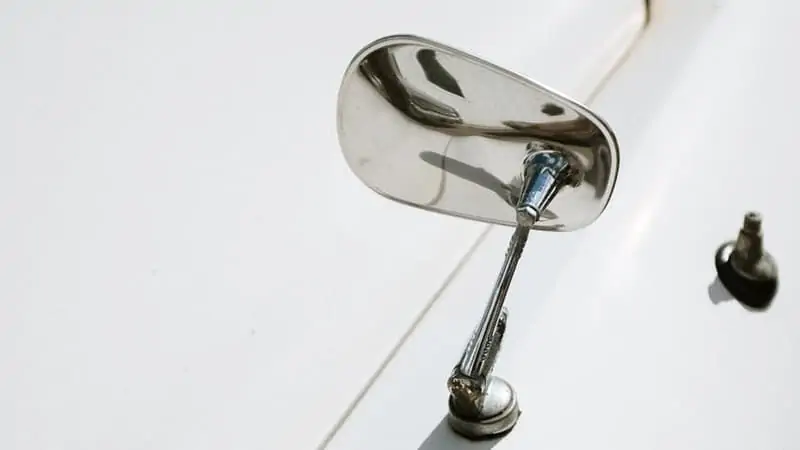When it comes to selecting a vehicle, its size is always a key factor. You should think about the car’s proportions to make sure it’s the right size for you. If you are not familiar with how to measure, you may wonder if car widths include mirrors.
Car widths are measured from the center of a vehicle’s front wheels to the center of its rear wheels. Mirrors don’t add any useful information to this measurement. They are just there for aesthetic purposes.
Mirrors are often included with cars as an afterthought, and many manufacturers have found ways to make them fit without making the cars wider. For example, some manufacturers will cut off the mirrors when the doors open or move the mirrors out of sight by using mirrors mounted behind the windshield instead of on the sides. Here is everything you need to know about a car’s width.
How Do You Measure the Width of a Vehicle?

There are many different ways to define the “width” of a car. Most commonly used is the wheelbase, but there are also other measurements like overall length or track width. The latter two are often combined into an overall length/track width ratio.
It depends on how you’re defining ‘wide.’ If by ‘wide’ you mean the width of the body, this would be measured as the car’s width. However, if you want to consider the tires’ width, I’d suggest measuring the space between the outside edges of the tires and taking the average.
Car widths are measured in inches, feet, and meters. The most common measurement is the wheelbase, which is the distance between the centers of the front wheels and rear wheels. It’s typically measured from one side to the other. The length of a car can be measured in several ways:
Length: This is usually measured from bumper to bumper or the front edge of the hood to the back edge of the trunk lid.
Overall Length: This is the total length of the car from bumper to bumper.
Track Width: This is the width of the track that the tires sit on. Most cars have two sets of tires — one for each direction. Therefore, the track width is measured at the widest point of the tire.
Wheelbase: This is the distance between the center of the front axle and the center of the rear axle. Wheelbases are measured in inches, metric units, or fractions thereof.
Here are four different methods that you can use to determine your vehicle’s width.
Method 1: Use a ruler
If you have a ruler handy, then you can simply use it to measure your vehicle’s dimensions. Simply place the ruler along the length of your vehicle and mark off the distance between the center lines of your side mirrors. Then, multiply that number by 2.5 to get an accurate reading of your vehicle’s width. You can also use this technique to measure the height of your vehicle.
Method 2: Look inside your door handles

This is another easy way to measure your vehicle’s dimension. Simply open up your driver-side door handle and hold it level against your body. Then, measure the distance across the top of the handle.
Method 3: Stand next to your vehicle
This is probably the easiest way to measure your vehicle’s width. Simply stand next to your vehicle and make sure that you are facing straight ahead. Then, take a piece of string and tie it around the outside edge of your vehicle. Pull the end of the string tight so that it measures the full width of your vehicle.
You can also do this using a tape measure. Simply wrap the tape around the outside edge of the vehicle. Then, pull the end of the tape tight so that it measures your vehicle’s width. Be careful not to let the tape slip over any part of your vehicle when you do this.
How Many Inches Do Mirrors Add to Car Width?
A side mirror measurement of 1.5″ – 2″ is considered average for most vehicles. Most cars have at least 3/4″ wide mirrors, and some are as large as 1-1/2″. If you’re looking to buy a new car or truck, make sure the vehicle has an adequate amount of space for your mirrors!
How to Measure a Car Width With the Side Mirrors
Measuring your vehicle’s width is simple, but you need to be careful not to damage anything. When measuring your vehicle’s width, the most important thing is to make sure that you are using the correct equipment.
If you don’t have the right tools or use them incorrectly, you could end up damaging something on your vehicle and void your warranty. In this article, we will show you how to measure your vehicle’s width properly so that you can avoid any problems.
Step 1: Start by making sure that you are in front of your vehicle. You want to start from where you would normally look out of your side mirror. Make sure that you are looking straight ahead and that there is nothing obstructing your view.
Step 2: Next, turn your head towards the left side of your vehicle. Now, move your head back until it is even with the centerline of your side mirror. This is how wide your vehicle should be measured at its widest point.
Step 3: Repeat step two on the other side. This time, however, turn your head to the right. Your goal here is to get as close to the centerline of the opposite side mirror as possible without hitting anything. When you reach the outer edge of the mirror, stop moving your head and take note of the measurement.
Step 4: Take both measurements together and record them in your notebook. Once you’ve done this, double-check to see if they match. If they don’t, then repeat steps one through three for each side. Once you’re finished, you’ll know exactly what your vehicle’s width is!
Tips on Car Width Measurement

You may find yourself confused about which way to measure your vehicle. It’s easy enough to figure out, though. Just keep these tips in mind.
Measurement tip 1: Don’t assume that all vehicles are the same size. Some people think that their vehicle is wider than others because it has more doors or seats, but that isn’t necessarily true. For example, some SUVs are actually narrower than many sedans.
Measurement tip 2: Remember that you want to measure your vehicle at its widest point. That means that you want to try to stay away from the rear bumper and the wheel wells. These areas tend to be larger than other parts of your vehicle.
Measurement tip 3: Don’t forget to add a few inches to the total width of your vehicle. This extra space allows room for things like door panels and seatbelts.
The above-mentioned tips are great ways to determine your car’s width. However, you should always remember to use the proper equipment and to measure accurately. Otherwise, you might end up damaging your vehicle and voiding its warranty. So, before you begin measuring your vehicle’s width, make sure that you are equipped with the right tools.

